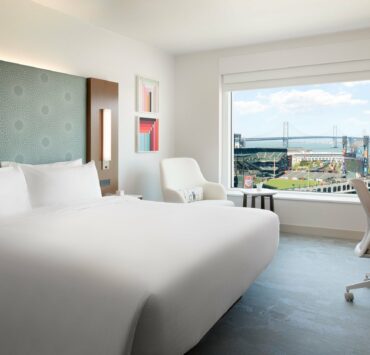Consumers who wanted to shop in-store sometimes and online at other times forced retailers to become omnichannel, offering their wares through brick-and-mortar stores and e-commerce sites. But omnichannel is not enough. Consumers increasingly want to shop in the “phygital world,” where technology speeds and improves the in-store browsing and buying experience. Consumer insights research from London-based global consultancy PwC drives this point home.
I wrote recently about PwC research that showed rising consumer interest in buying from direct-to-consumer brands. In a release of findings earlier this year, PwC also delved into growing consumer interest in phygital retail as part of a desire for frictionless retail experiences.
Phygital retail is not new. Widespread adoption of barcodes and digital price scanners by grocery stores back in the 1980s helped usher in a retail world that now includes self-service checkouts, sales associates equipped with digital devices to call up product information instantaneously, retailer mobile apps, in-store design services aided by 3D configurators, and more.
In and out of stores
At this point, we know consumers are comfortable shifting between e-commerce and in-store shopping and they regularly make use of both channels. PwC research released in February showed about 43% of respondents shop in-store most often. About 34% of the time, they shop online via their mobile phones and 23% sit down at their PCs to visit e-commerce sites. Those numbers have held from the 2022 survey, according to PwC. (A quick aside: I’m distressed by the number of smaller retailers and some designers who haven’t optimized their websites for mobile use. If you haven’t, make it a priority for 2024.)
As PwC notes, the results show in-store shopping has rebounded since the start of the Covid-19 pandemic, “but the data also shows that the long-term growth trends remain intact,” meaning that consumers will continue to split their shopping across channels, with gradual trends toward more online shopping, mostly driven by younger consumers.
Two rounds of Consumer Insights Now research have made similar findings. Consumers prefer in-store shopping for furniture, especially for big-ticket items and those where comfort and feel are a factor, like sofas and mattresses, according to CIN surveys conducted in mid-2022 and again in early 2023. That pattern holds across age groups, although younger consumers are generally more comfortable shopping online for all home furnishings categories than older demographics.
(Consumer Insights Now research is conducted on behalf of Decor News Now and its sister publications Home News Now, Casual News Now and Bedding News Now. We’ll release a new round of actionable insights from CIN research over several weeks beginning in mid-September.)
Where digital and physical meet
But when consumers do venture into stores, they increasingly expect technology to improve the experience, making shopping easier, faster and more fun. As the PwC report accompanying the survey results puts it, “Consumers are saying that they want the physical shopping experience to be enhanced, facilitated or mediated by digital technologies: Call it phygital.”
Among the technologies consumers like to see in brick-and-mortar stores are self-service checkouts (16%), retailer websites or mobile apps that help them to browse for specific products (15%) and “scan-and-go” devices and apps that allow shoppers to bypass both staffed checkout lanes and self-service checkouts (12%). The tech that speeds checkout is certainly less of a factor at a furniture store or design studio than a grocery store or discounter. But it points to consumers’ desire for a speedy departure from a store once they’ve decided what to buy. POP tech can help retailers of all types give shoppers the hassle-free, quick sale they desire.
“More tellingly, consumers who said they intend to spend more time in brick-and-mortar environments in the coming six months signaled that they expect more technological bells and whistles,” the PwC report says.
Those “bells and whistles” include everything from in-store entertainment (34%) to immersive digital experiences, such as using a virtual reality headset to test new products (30%). Think VR that allows shoppers to sit at a dining table that appears to be in their home.
But consumers also want what might be considered more pedestrian tech, like the ability to book an appointment with a sales associate or personal shopper (28%). That’s relatively easy and inexpensive to implement.
It will soon be budgeting time for many retailers. New technology can be a big expense upfront but implementing tools that give your shoppers a frictionless in-store experience can pay off through good word-of-mouth and repeat customers who are eager to return to your phygital world.



